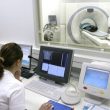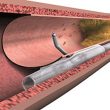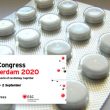Percutaneous coronary intervention (PCI) with drug coated balloons (DCB) is a viable alternative, especially in patients at high risk of bleeding, side-branch lesions in coronary bifurcation, or in small coronary segments. De novo heart disease treated with DCB has been shown non-inferior to conventional DES stenting, according to the PICCOLETO-II trial. However, these interventions are<a href="https://solaci.org/en/2024/07/08/predictors-of-dcb-failure-in-de-novo-lesions-2/" title="Read more" >...</a>
Cardiac Angiography: Necessary for CABG Patient Diagnosis?
Cardiac revascularization surgery (CABG) has shown positive results at long term in CAD patients with multivessel or left main disease. However, we are well aware that, after CABG, there might be native disease progression over time. Also, at followup, we often see high incidence of venous graft failure. According to registry data, approximately 1 in<a href="https://solaci.org/en/2023/10/12/cardiac-angiography-necessary-for-cabg-patient-diagnosis/" title="Read more" >...</a>
Cause of Cardiac Death after TAVR at Present
Cardiac failure (CF) and sudden cardiac death (SCD) stand out as two of the main causes of death in patients with aortic stenosis. Although transcatheter aortic valve intervention has shown higher survival, these two continue to be the main conditions leading to patient death at followup. In its early days, TAVR also showed benefits, but<a href="https://solaci.org/en/2023/10/11/cause-of-cardiac-death-after-tavr-at-present/" title="Read more" >...</a>
A New Alternative for the Treatment of Heart Failure: Left Atrial to Coronary Sinus Shunt with the APTURE Device
ALT FLOW device for left atrial to coronary sinus shunting in symptomatic heart failure patients. In the treatment of heart failure (HF), significant improvement in patient quality of life and prognosis has been achieved through appropriate medical treatment and, in some cases, the use of devices. However, in certain cases, satisfactory clinical improvement cannot be<a href="https://solaci.org/en/2023/07/04/a-new-alternative-for-the-treatment-of-heart-failure-left-atrial-to-coronary-sinus-shunt-with-the-apture-device/" title="Read more" >...</a>
Secondary Mitral Regurgitation: Stages of Heart Failure and Prognostic Implications after Transcatheter Edge-to-Edge Repair
We are already familiar with the strong impact of secondary mitral valve regurgitation (SMR) in survival and quality of life. Most of these patients present heart failure (HF) with reduced ejection fraction (HFrEF). Stages of heart failure based on extra-mitral cardiac involvement has been shown relevant. There is also extensive research on aortic valve disease<a href="https://solaci.org/en/2023/01/09/secondary-mitral-regurgitation-stages-of-heart-failure-and-prognostic-implications-after-transcatheter-edge-to-edge-repair/" title="Read more" >...</a>
EuroPCR 2022 | Changes in Cardiac Damage after Surgical Aortic Valve Replacement
This study presented at EuroPCR 2022 analyzed the PARTNER study pool and included 1974 patients with a complete echocardiogram. Surgical risk was 17.3% extreme/inoperable, 54.3% intermediate and 28.4% low. 60% received transcatheter aortic valve replacement (TAVR) and the rest surgical aortic valve replacement (SAVR). 6.1% of patients were in stage 0 (no damage), 14.5% were<a href="https://solaci.org/en/2022/05/19/europcr-2022-changes-in-cardiac-damage-after-surgical-aortic-valve-replacement/" title="Read more" >...</a>
More Screening Needed Before Non-Cardiac Surgery
According to this recent document by the American Heart Association (AHA), troponin should be monitored for at least 3 days after surgery. With about 20% of patients (most of them, asymptomatic) showing elevated troponin after a non-cardiac surgery, this new AHA document recommends monitoring, for at least two days, patients with moderate to severe ischemia. Myocardial<a href="https://solaci.org/en/2021/10/19/more-screening-needed-before-non-cardiac-surgery/" title="Read more" >...</a>
ESC 2021 | Empagliflozin in Heart Failure with Reduced and Preserved Ejection Fraction
The full results of the EMPEROR-Preserved study confirm as findings that empagliflozin decreases the risk of death or hospitalization for heart failure (HF) in both patients with reduced and with preserved function. The primary endpoint (a composite of death and hospitalization for HF) was reduced by 21% on a relative basis with sodium/glucose cotransporter 2<a href="https://solaci.org/en/2021/09/01/esc-2021-empagliflozin-in-heart-failure-with-reduced-and-preserved-ejection-fraction/" title="Read more" >...</a>
Suboptimal Recanalization Results Worse than Procedural Failure
This large cohort of patients undergoing PCI for chronic total occlusion has shown suboptimal recanalization is associated with cardiac death and myocardial infarction at long term compared against procedural failure. The link between acute outcomes and long-term events in recanalizations has been overlooked. Mainly when it comes to suboptimal results, is doing something more trouble<a href="https://solaci.org/en/2020/12/28/suboptimal-recanalization-results-worse-than-procedural-failure/" title="Read more" >...</a>
ESC 2020 | Rivaroxaban Might Reduce Cardiac Cerebral and Peripheral Events
Adding rivaroxaban to the standard treatment might reduce events incidence in lower limbs, heart, and brain, in patients with peripheral vascular disease undergoing revascularization. These new data resulted from the analysis of the VOYAGER PAD subgroups and were presented at the virtual ESC 2020. The COMPASS study had reached similar conclusions using 2.5 mg rivaroxaban<a href="https://solaci.org/en/2020/09/09/esc-2020-rivaroxaban-might-reduce-cardiac-cerebral-and-peripheral-events/" title="Read more" >...</a>









